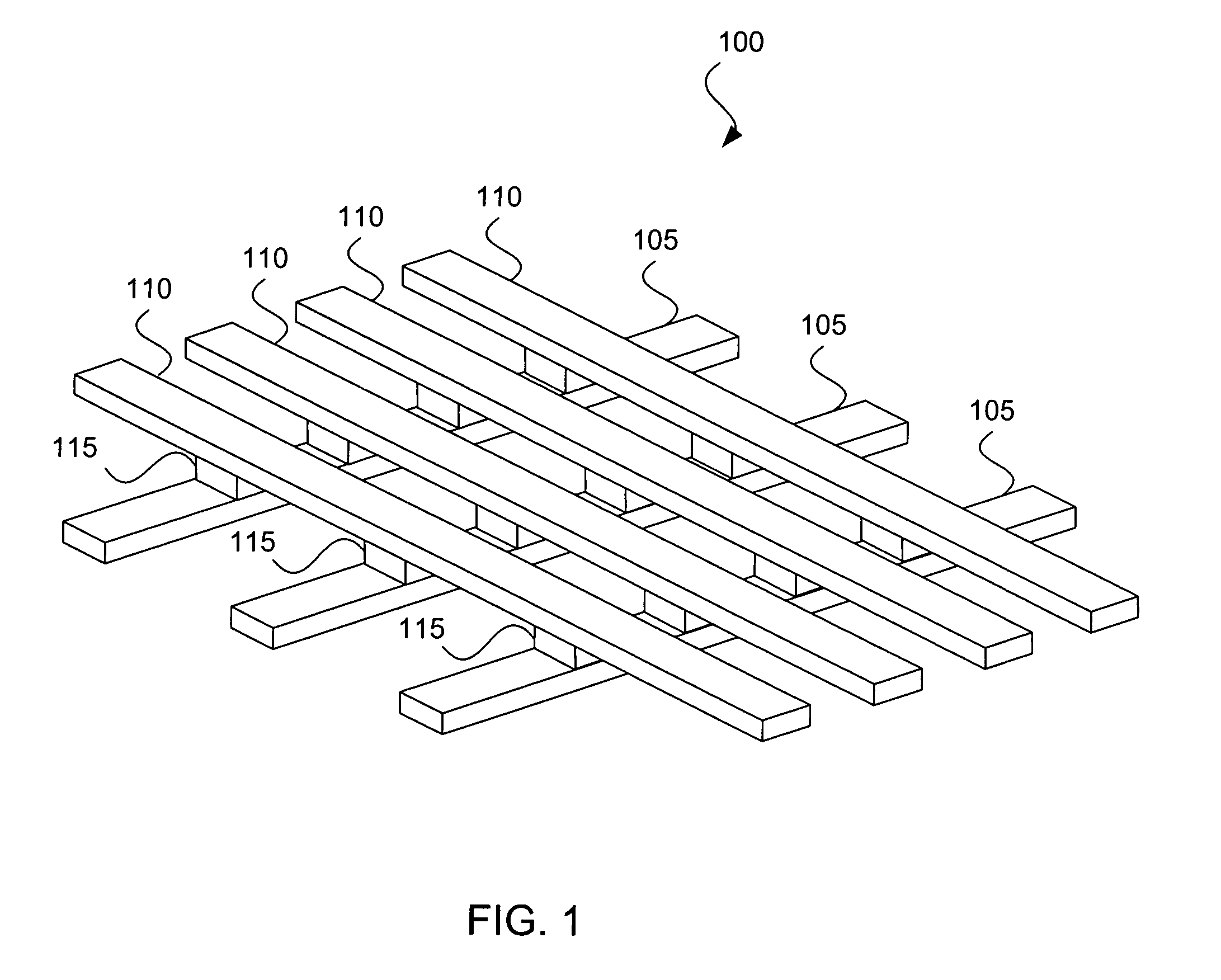Line drivers that use minimal metal layers
a metal layer and driver technology, applied in the field of memory, can solve the problems of limiting the total size and applications of the memory, requiring a complex refresh algorithm, and nonvolatile memory such as flash memory is slower to program
- Summary
- Abstract
- Description
- Claims
- Application Information
AI Technical Summary
Problems solved by technology
Method used
Image
Examples
Embodiment Construction
[0056]In the following description, numerous specific details are set forth to provide a thorough understanding of the present invention. It will be apparent, however, to one skilled in the art that the present invention may be practiced without some or all of these specific details. In other instances, well known process steps have not been described in detail in order to avoid unnecessarily obscuring the present invention.
Overview
[0057]The random access reads and writes that are required for RAM devices typically require that a particular memory cell be capable of being selected out of an entire memory block. For a two terminal memory cell in a cross point structure, that usually means that both terminals are used for selection. Since one of the terminals is common to an entire row of memory cells and another terminal is common to an entire column of memory cells in a cross point array, writing with a single terminal would result in writing to either an entire row or an entire col...
PUM
 Login to View More
Login to View More Abstract
Description
Claims
Application Information
 Login to View More
Login to View More - R&D
- Intellectual Property
- Life Sciences
- Materials
- Tech Scout
- Unparalleled Data Quality
- Higher Quality Content
- 60% Fewer Hallucinations
Browse by: Latest US Patents, China's latest patents, Technical Efficacy Thesaurus, Application Domain, Technology Topic, Popular Technical Reports.
© 2025 PatSnap. All rights reserved.Legal|Privacy policy|Modern Slavery Act Transparency Statement|Sitemap|About US| Contact US: help@patsnap.com



